Today's Current Affairs 4th September 2023
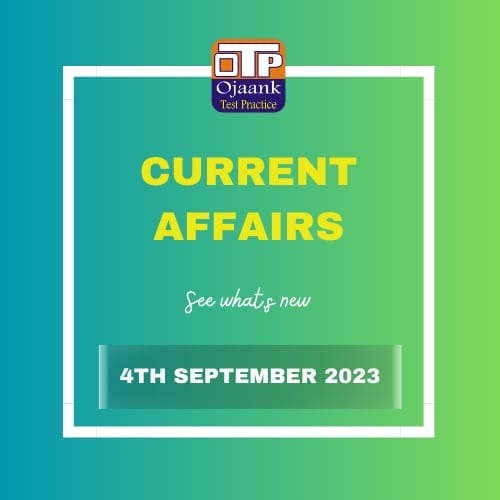
Mitakshara Law of Succession
GS Paper I (Art & Culture)
Context:The Mitakshara law-governed joint Hindu family property can pass to children born from invalid or voidable marriages, according to the Supreme Court. The parent's share is the only property over which the parent has inheritance rights; other family members' holdings are not included.
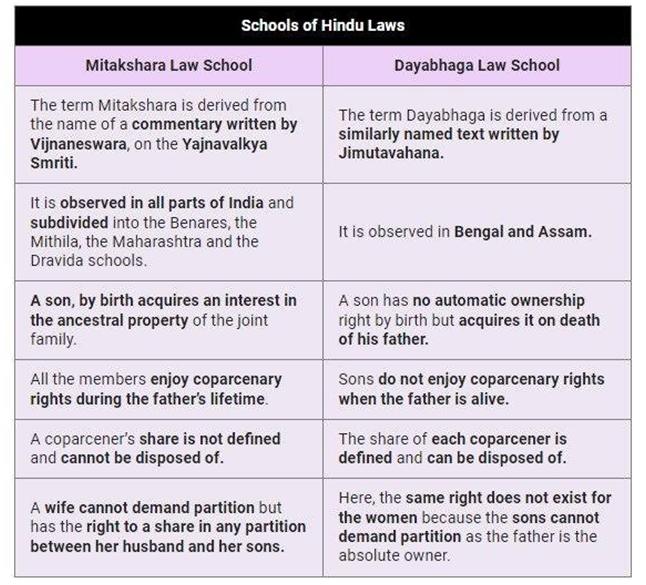
Mitakshara School of Law:
|
History |
Originated in ancient India; attributed to Vijnaneshvara, a 12th-century scholar |
|
Focus |
Interpretation of Yajnavalkya Smriti in matters of family, property, and inheritance law |
|
Ancestral Property |
Emphasis on joint family property and ancestral property rights |
|
Inheritance |
Defines rules for succession and inheritance within Hindu families |
|
Variations |
Different regional interpretations, including the “Dayabhaga” School |
|
Regional Influence |
Widespread influence on Hindu legal practices, especially in property law |
|
Development |
Evolved over time and influenced by legal reforms and societal changes |
|
Modern Context |
Coexists with contemporary legal frameworks and personal laws |
|
Significance |
Played a significant role in shaping Hindu family and property law |
Nature of Marriages and Law:
A voidable marriage can be declared null and void by the husband or wife using a court order.
A null marriage is void from the start.
Except for West Bengal and Assam, the Mitakshara Law of Succession is applicable to Hindu Undivided Families across India.
Ruling Details:
The Supreme Court, presided over by Chief Justice D.Y. Chandrachud, made it clear that a child of a null or voidable marriage is not entitled to any of the assets of other family members.
Only the parent's portion of the ancestral property is subject to the child's inheritance rights.
In order to determine the parent's share just prior to their passing, a "notional partition" is carried out.
Inheritance Calculation:
The law presupposes that the dead parent and other family members divided the ancestral property before the parent's passing.
The portion that the parent would have received through this hypothetical partition serves as the basis for the child's inheritance.
Legal Basis:
Children born from invalid or voidable marriages are given legitimacy under Section 16 of the Hindu Marriage Act.
According to the ruling of the court, these kids are entitled to their parents' possessions.
The Hindu Succession Act reflects the Hindu Marriage Act's intention to legitimise such offspring.
Impact of Amendment:
A deceased person's part of a combined Hindu family's assets may pass to heirs through testamentary or intestate succession under the Hindu Succession (Amendment) Act, 2005.
Prior to the amendment, only survivorship was used for devolution.
Women now have the same rights to succession as males have.
Background and Precedents:
The Hindu Marriage Act's Section 16(3) served as the case's focal point.
A Supreme Court division bench fought for the ability of children born of illicit unions to inherit their parents' property in 2011.
The Division Bench emphasised that these kids should have the same rights as kids from legally recognised unions.
Conclusion:
The idea of legitimacy changes as societal norms do.
The court noted that anything that was deemed illegal in the past could be legal now.
Based on changing social consensus, inheritance rights should not be denied to children born from null or voidable marriages.
Source: The Hindu
Bharatiya Nagarik Suraksha Sanhita (BNSS), 2023
GS Paper II (Polity & Governance)
Context:The Criminal Procedure Code (CrPC) is intended to be replaced by the Bharatiya Nagarik Suraksha Sanhita (BNSS) 2023, which also makes major amendments to the procedure for filing a mercy plea in death penalty cases. Core elements including justiciability, time constraints, and the execution procedure are impacted by these modifications.

Background on Mercy Petitions:
Articles 72 and 161 of the Constitution gave the President and Governor authority to commute sentences or grant pardons.
It was established by the Supreme Court's decision in Maru Ram v. Union of India (1981) that the President must follow the Council of Ministers' guidance while deciding whether to grant a mercy plea.
New Mercy Petition Provision in BNSS:
Convicts may submit mercy petitions under BNSS Section 473(1) within 30 days after certain incidents.
Based on the rejection of appeals or the affirmation of punishments, convicts may petition the President or Governor.
They must all submit petitions within 60 days in circumstances where there are many convicted parties.
Centre’s Role in Mercy Petitions:
The Centre examines the situation, gets input from the state administration, and, within 60 days, provides recommendations to the President.
The President's choice is not given a deadline.
Exclusion of Appeals against President’s Decision:
The President's judgements regarding mercy requests are considered final, according to BNSS Section 473(7).
The president's decisions to pardon or commute sentences are not subject to judicial review or inquiry.
Unlike the Shatrughan Chauhan v. Union of India (2014) decision, which required a 14-day delay before an execution following the denial of a mercy plea, BNSS makes no reference of this clause.
Delay in Mercy Petition Disposal:
The Shatrughan Chauhan case made it clear that mercy petition decisions should not be delayed unnecessarily.
There is no time restriction under BNSS for the President to decide on mercy requests.
Conclusion:
The planned BNSS's changes to mercy petitions present issues with regard to openness, judicial oversight, and the defence of prisoners' rights.
In these suggested modifications, it still becomes difficult to strike a balance between constitutional rights and prompt justice.
Source: The Hindu
National Mission for Clean Ganga (NMCG)
GS Paper III (Environment)
Context:The National Mission for Clean Ganga (NMCG) uses sewage treatment facilities (STPs) and sewerage networks to treat sewage produced in five main states in an effort to clean the Ganga River. With a goal of 60% by December 2026, NMCG has achieved 20% sewage treatment capacity over the course of seven years.
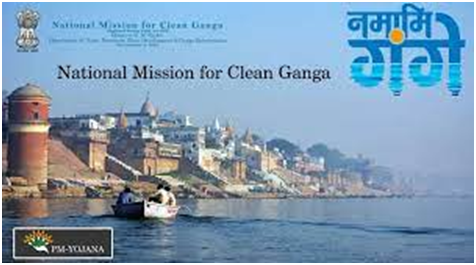
About National Mission for Clean Ganga (NMCG)
|
Objective |
Restore and rejuvenate the Ganga River and its tributaries, ensuring their ecological and geological health |
|
Formation Year |
2014 |
|
Nodal Agency |
Ministry of Jal Shakti, Government of India |
|
Coverage |
Encompasses Ganga and its major tributaries |
|
Key Areas |
Pollution control, riverfront development, biodiversity conservation, afforestation, and public awareness |
|
Projects |
Ghat and crematoria development, sewage treatment plants, river surface cleaning, and more |
|
Holistic Approach |
Integrates various government initiatives, stakeholders, and public participation |
|
Collaborations |
Partnerships with state governments, NGOs, international agencies, and private sector |
|
Legal Measures |
National Ganga River Basin Authority (NGRBA) established for river protection |
|
Significance |
Addresses ecological, social, and cultural aspects while ensuring sustainable water quality |
Current and Future Sewage Treatment Capacity:
Currently, the NMCG handles 20% of the sewage produced in the Ganga river basin.
By December 2026, the treatment capacity is anticipated to increase to 60% from 33% in 2024.
According to estimates, sewage is produced in five states—Uttarakhand, Uttar Pradesh, Bihar, Jharkhand, and West Bengal—at a rate of 11,765 million litres per day (MLD).
Role of NMCG:
The Ganga River shouldn't get any untreated sewage, according to NMCG.
Sewage produced within the states but not necessarily going into rivers is included in the 11,765 MLD prediction.
By 2026, NMCG intends to have 7,000 MLD of sewage treatment capacity installed.
Projects and Progress:
In the NMCG project, STPs and sewage networks make up around 80% of the total cost.
Functional STPs will treat 2,665 MLD by July 2023, 1,455 MLD more than the previous fiscal year.
Project delays were brought on by difficulties with land acquisition and changes to Detailed Project Reports.
State-wise Distribution:
Uttarakhand (36 STPs), Uttar Pradesh (35) and West Bengal (11) are the states with the most STPs.
Despite having a budget of 20,000 crores, the NMCG has received in-principle clearance for projects totaling 37,396 crores, with 14,745 crore of that amount set aside for infrastructure construction by June 2023.
Positive Water Quality Indicators:
The water quality in Ganga is now within the "prescribed limits of notified primary bathing water quality."
Nature has endorsed river development initiatives as seen by the increasing dolphin population (from 2,000 to 4,000) and the presence of Indian carp in cleaner waterways.
To effectively convey water quality requirements, NMCG is developing a water quality index that is comparable to the air quality index.
Conclusion:
The success of NMCG represents a favourable trajectory for the Ganga River restoration, as seen by the greater aquatic life and better water quality.
The mission's efforts to develop better water resources and address sewage treatment concerns are ongoing.
Source: The Hindu
Armenia and Azerbaijan Conflict
GS Paper II (International Relations)
Context:As tensions between the two nations continue, Azerbaijani fire has claimed the lives of three Armenian troops.

What is the dispute?
Armed forces were mobilised in Armenia and Nagorno-Karabakh, an occupied area in Azerbaijan that has declared independence and is governed by ethnic Armenians.
Armenia said that Azerbaijan had attacked Nagorno-Karabakh with artillery and aircraft.
Epicentre: The Nagorno-Karabakh region
Conflict erupted in 1991 when the Soviet Union fell apart, leading to the secession of Nagorno-Karabakh from Azerbaijan.
After tens of thousands of people were slain and countless more were displaced, a truce was reached in 1994.
Attacks near Nagorno-Karabakh and along the distinct Azeri-Armenian border are routinely blamed on one another by Azerbaijan and Armenia.
Economics behind the clashes:
The fights sparked a frenzy of diplomatic activity to stop a further escalation of a long-running dispute between predominately Muslim Azerbaijan and Armenia, which is populated by Christians.
Near Nagorno-Karabakh are the pipelines that transport Caspian oil and natural gas from Azerbaijan to the rest of the globe.
Conflicts have sparked worries about instability in the South Caucasus, a route for pipelines carrying gas and oil to international markets.
Source: Indian Express
Tibetan Democracy Day
GS Paper II (International Relations)
Context:The establishment of the Tibetan government-in-exile in Dharamshala is commemorated on Tibetan Democracy Day. It represents the restoration of Tibetan democracy following an eviction.
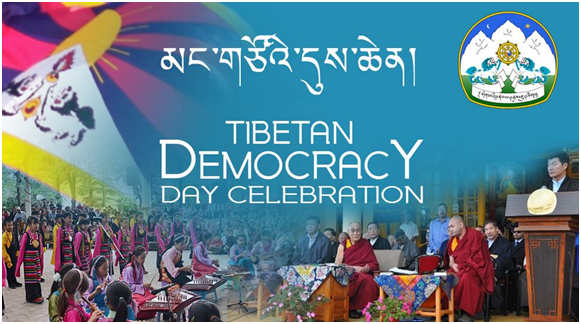
Tibetan Govt in Exile: Historical Genesis
The first elected members of the Tibetan Parliament-in-Exile were sworn in in 1960, one year after Tibetans were forcibly removed from their homes.
Due to His Holiness the 14th Dalai Lama's guidance, the Tibetan constitution, which placed a strong emphasis on democracy, was adopted in 1963.
Role of Central Tibetan Administration (CTA):
Over 100,000 Tibetan refugees are managed by the CTA, which has its headquarters in Dharamshala.
It is the centre of Tibetan resilience and self-governance.
CTA’s Evolution:
The Tibetan constitution allowed for the election of the first female lawmakers in 1963.
The CTA recognised September 2 to be the day Tibetan democracy was established in 1975.
In 1991, the Tibetan Supreme Justice Commission was established, and in 1992, the Charter of the Tibetans in Exile.
CTA’s Functioning:
The CTA is run by the President (Sikyong), and it is divided into the following departments: Information and International Relations, Finance, Education, Security, Home, and Health.
There are 45 members of the Tibetan Parliament-in-Exile, who represent different facets of the Tibetan population.
Leadership Transition:
The executive head, Kalön Tripa, was elected directly as a result of the Dalai Lama's transition to semi-retirement.
In 2011, Sikyong, the CTA President, received political authority from His Holiness.
Bodh Gaya’s Role:
The democratic system was established in 1960 when the first elected Tibetan legislators took their vows in Bodh Gaya.
In the early stages of Tibetan democracy, Bodh Gaya was crucial.
India’s perception of Tibet:
Although India regards the Dalai Lama as a spiritual authority, the CTA is not recognised by the country as a legitimate government.
It supports Tibetan refugees while striking a balance with diplomatic issues.
Global Recognition:
The US is a strong advocate for Tibet, with bipartisan support and specialised coordinators.
Tibetans respect India's ongoing support despite its scant international acknowledgment.
Source: Indian Express
Facts for Prelims
Press and Registration of Books (PRB) Act (amendment), 1867:
For the purpose of putting the PRB Act of 1867's changes into effect, the Centre has issued a notification.
The Jan Vishwas (Amendment of Provisions) Act of 2023 allowed for amendments.
removed the option of incarceration and rationalised the amount of penalties.
The Press Registrar may suspend or revoke a registration certificate due to an irregularity, failure to provide an annual statement, etc.
Extension of the Press and Registration Appellate Board's jurisdiction.
Fiberization:
Since the introduction of 5G services, the rate of optical fibre installation has accelerated throughout the nation.
The technique of fiberizing involves running optical fibre connections between radio towers.
It enables complete network capacity utilisation and transports massive quantities of data required for 5G services.
Additionally, it will help in supplying more bandwidth and better backhaul support.
Currently, just 38% of the towers in India are fiberized, compared to 80%-90% in the United States, Japan, and China.
CE-20 Cryogenic Engine:
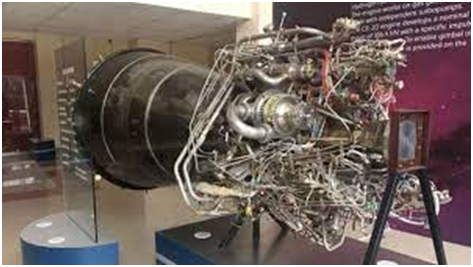
The CE-20 cryogenic engine that would be utilised in "Mission Gaganyaan" has undergone successful testing by ISRO.
Compared to solid and liquid propellant engines, cryogenic engines are significantly more powerful since they employ fuels at cryogenic temperatures (-150 to -273 degrees Celsius).
It is the first cryogenic engine to employ a gas-generator cycle with a mixture of liquid hydrogen and oxygen propellants.
It will serve as the upper stage of the Geosynchronous Satellite Launch Vehicle Mk III (LVM3) and has a 28-ton fuel capacity.
copyright 2022 Ojaank Foundation.


